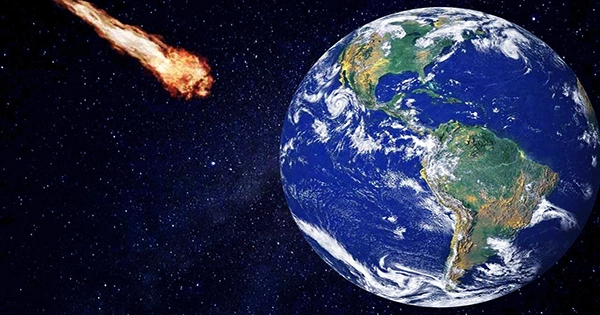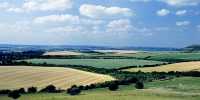The Vredefort crater was created by the largest asteroid to ever strike our planet, which impacted close to what is now Johannesburg, South Africa, back when there were no trees and only single-celled species living on Earth.
The size of the asteroid was first thought to be around 15 kilometers (9.3 miles) in diameter, with an anticipated crater size of between 250-280 kilometers (155-174 miles) following the first impact. New research from the University of Rochester, however, indicates that the recalculated size is more likely to be enormous—25 kilometers (15.5 miles).
The scientists determined the size of the asteroid required to have an impact on the size of the Vredefort crater using the Simplified Arbitrary Langrangian Eulerian (iSALE) shock physics algorithm.
They discovered that the initial estimate of impact site diameter would result in an impact site measurement of roughly 172 kilometers (106.8 miles). The impactor would have needed to be significantly larger to reach the real distance of 250–280 kilometers (155–174 miles).
We can extrapolate from what we already know about the Chicxulub crater impact’s aftermath to estimate the impact’s potential effects on Earth’s environment.
The Chicxulub crater was made by a 10-kilometer (6.2-mile) asteroid that killed off 75% of the plant and animal species on Earth 66 million years ago and is thought to be the reason for the mass extinction of the dinosaurs.
Fortunately for all life on Earth, there weren’t many 2 billion years ago. It is believed that the Vredefort impact would have had a greater impact on the global climate than the Chicxulub impact, while not being the cause of a mass extinction catastrophe.
The sun would have been completely obscured for an extended period of time due to the massive amount of disturbed dust that the asteroid crash produced. The Earth’s surface temperature would have significantly decreased due to this dusty sunscreen. The carbon dioxide released by the impact would have elevated the planet’s temperature by several degrees as the dust settled.
We now know more about the geographic structure of Earth 2 billion years ago thanks to impacts of this scale and from this time period.
Researchers compared samples from the present-day Russian region of Karelia to the ejected material from the Vredeford crater. At the time of the collision, they calculated that the two landmasses were roughly 2,000–2,500 kilometers (1,241–1,553 miles) apart.
The knowledge obtained from strikes of this size allows researchers to investigate the effects of past massive planetary impacts and estimate probable implications of upcoming collisions. It also aids in our understanding of what the planet was like 2 billion years ago.














